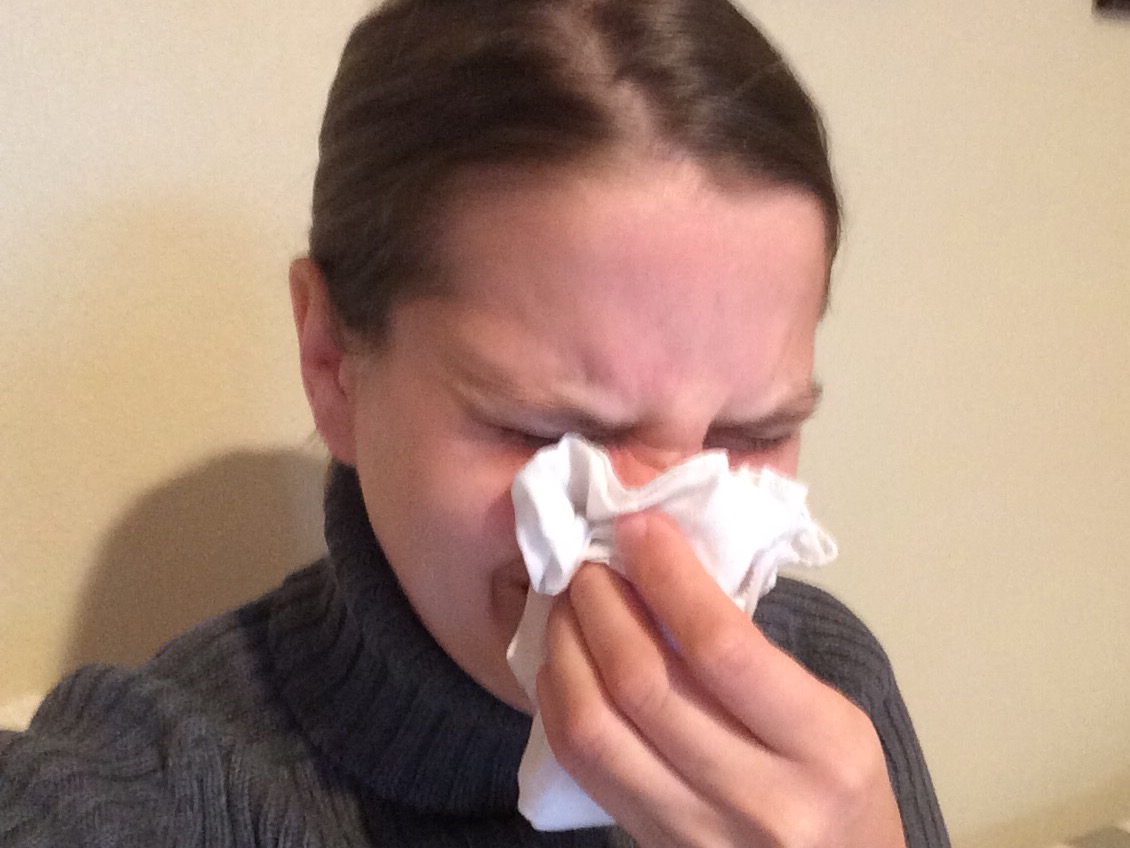Fall is my favorite season with one notable exception: allergies. When I was a kid, I’d attribute the sudden sneezing, coughing, low-grade fever, and exhaustion to going back to school. Anything could have contributed to my body falling apart come mid-September: a lack of sleep, the sudden change in habitat to sharing close quarters with a few dozen disgusting teens, stress over getting A’s in all my classes except math (yeah, I was one of those kids).
As an adult, I now know that allergies are the actual culprit. Allergies were not a good reason to stay home from school; a cold was. But when you’re getting paid to show up to work, it’s way more convenient to attribute your disgusting mess to allergies.
And I am a disgusting mess when allergy season rolls around.
My gross personage is especially distressing this year, as I am not only in the customer service industry, but my body isn’t accustomed to Seattle allergens. People around me complain of headaches and itchy eyes; I’m hacking, coughing, and blowing colored mucus from my nose every other minute. Even my self-prescribed cocktail of nasal sprays, allergy pills, and caffeine is a bust. Customers and co-workers recoil, only half assured when I tell them it’s only allergies, nothing contagious. I may as well be a leper in the middle ages.
Only one thing comforts me when allergy season arrives: my choice to be zero waste. Why? Because hankies.
Now, if you were born after 1920, there’s a 100% chance you think handkerchiefs are gross. The mere thought of a rag that you use to blow your nose in forever and never throw away makes you wretch. I agree. That’s why I make sure my hankies are clean.
I don’t expect to agree, but before you write me off, let me tell you why hankies are awesome.
Save Face
Believe it or not, the number one reason why I now use handkerchiefs isn’t because of the environment. It’s because they’re soft.
By the end of week 1 using paper tissues, my skin would be raw, red, sometimes even peeling. That’s because disposable tissues ARE NOT SOFT. They’re made out of paper. Even if they’re infused with lotion (for an extra $2+), they’re still paper. You’re gonna mess your face up with that.
Handkerchiefs, on the other hand, can be made out of cotton, flannel, or silk. The more you wash them, the softer they get. Marketers have spent billions of dollars trying to convince you that tissues are soft, but they’ll never come close to a cloth handkerchief. Since the switch to zero waste, I no longer have to worry about wiping my skin out of existence just to get snot off my face.
Save Money
My weekly grocery budget no longer changes whenever allergies hit me. Once upon a time I’d drop $20-30 or more every six months to accommodate my runny nose. Now I’ve spent that initial budget once on a few packages of hankies, and I never have to spend it again.
Save Time…?
Eh, not really. Like so many things with zero waste, you trade the time you spend going to the grocery store to buy new boxes of Kleenex, picking up all the tissues that didn’t make it into the trash can (we can’t all be basketball stars), and taking your trash to the curb with washing and folding your hankies.
Save the Environment
Of course not throwing away tissues cuts down on your trash. Duh.
There’s Still a Stigma Against It
When I pull out a hankie to blow my nose, people think I’m gross. I’ve done everything I can to make others comfortable; I even opted for white hankies because they look more like tissues. And yet the stigma stands.
That’s okay. I was a weird kid growing up, so I’m used to it. I care more about making healthy sustainable choices than people liking me. That’s the only way to create real change.
How to Do It
On the offhand chance I have convinced you it’s worth your while to use hankies instead of disposable tissues, here are the easy steps to take:
- Get a lot of hankies. Cut up a few old sheets or do what I did and buy a bunch of organic cotton handkerchiefs in bulk (the packaging for which made up the majority of my trash jar that first October).
- Use hankies only once or twice before putting them in a container marked “dirty”.
- Wash all your dirty hankies in a washing machine using the hottest water setting available.
- Iron your clean hankies for extra sterilization (in my opinion, only do this if you’re actually contagious, not for allergies).
- Fold your hankies and store in a clean mason jar/other container that can act as your tissue box.
- Repeat from step 2.
